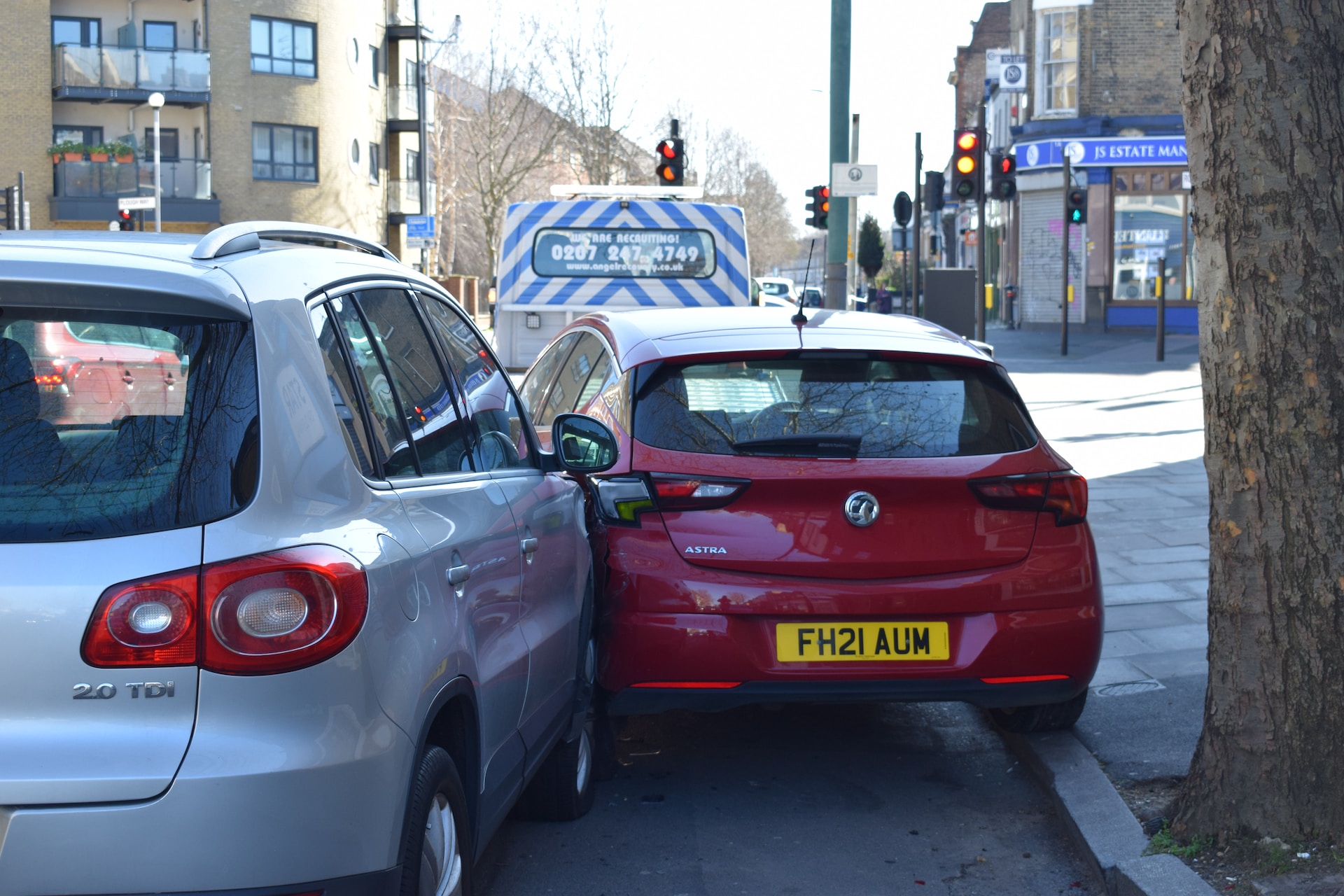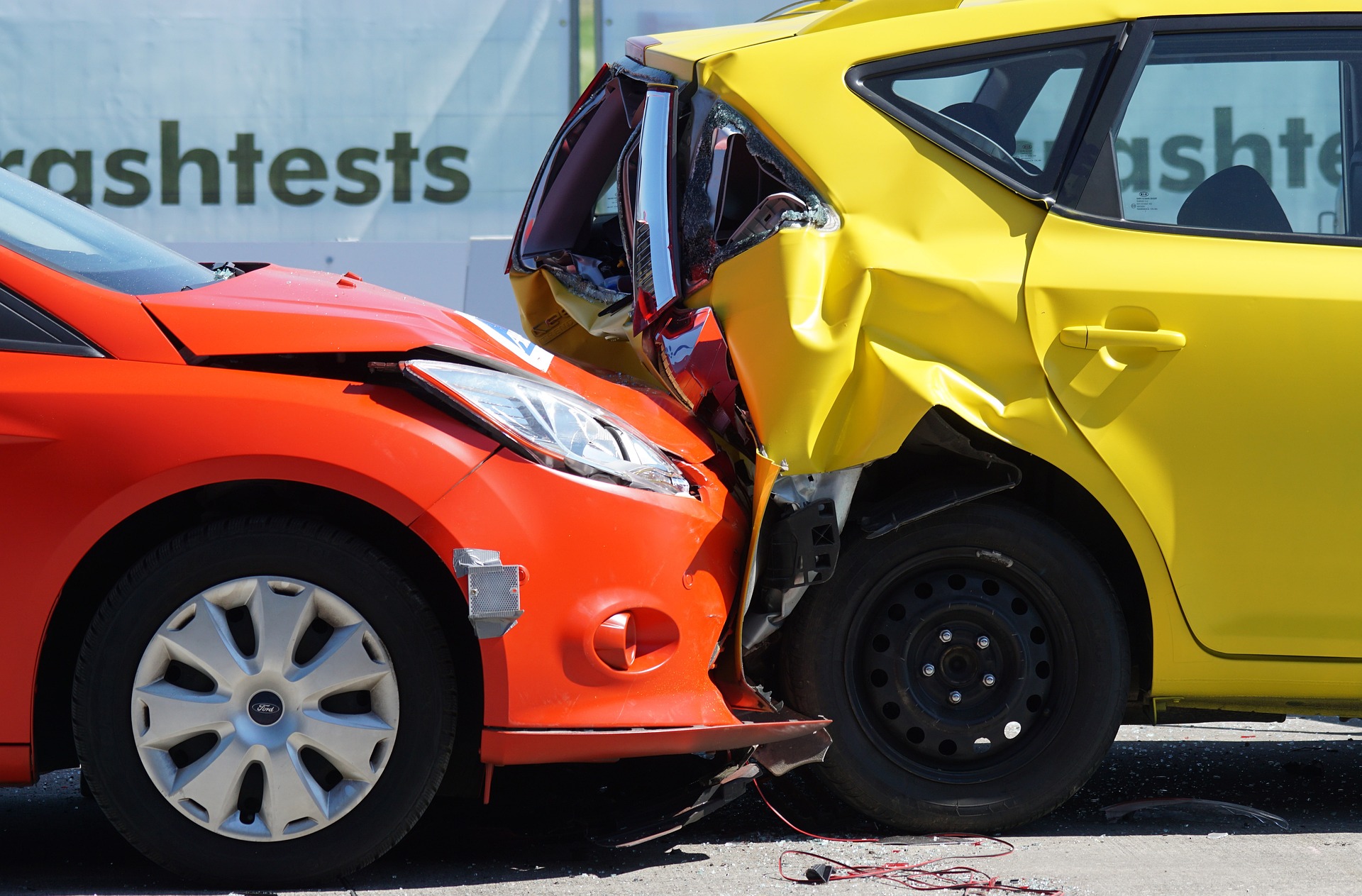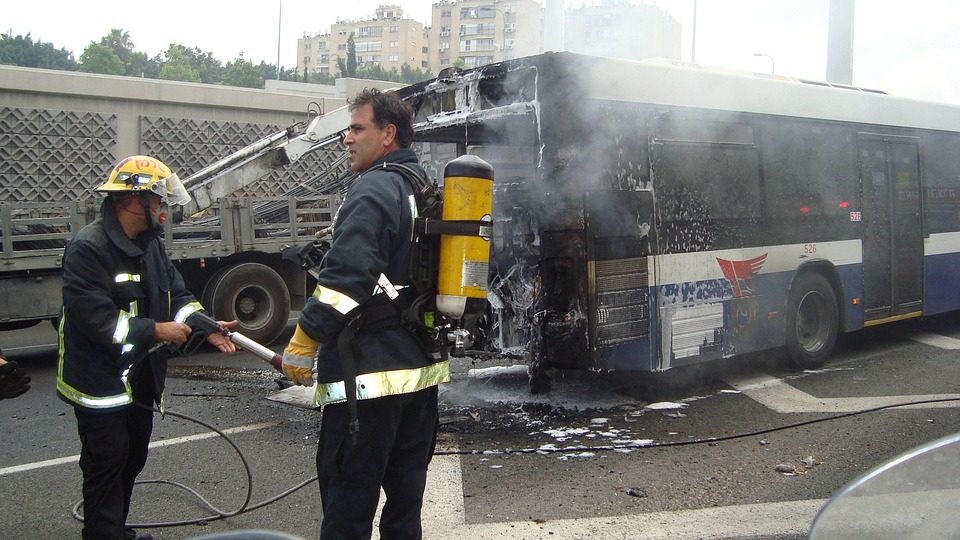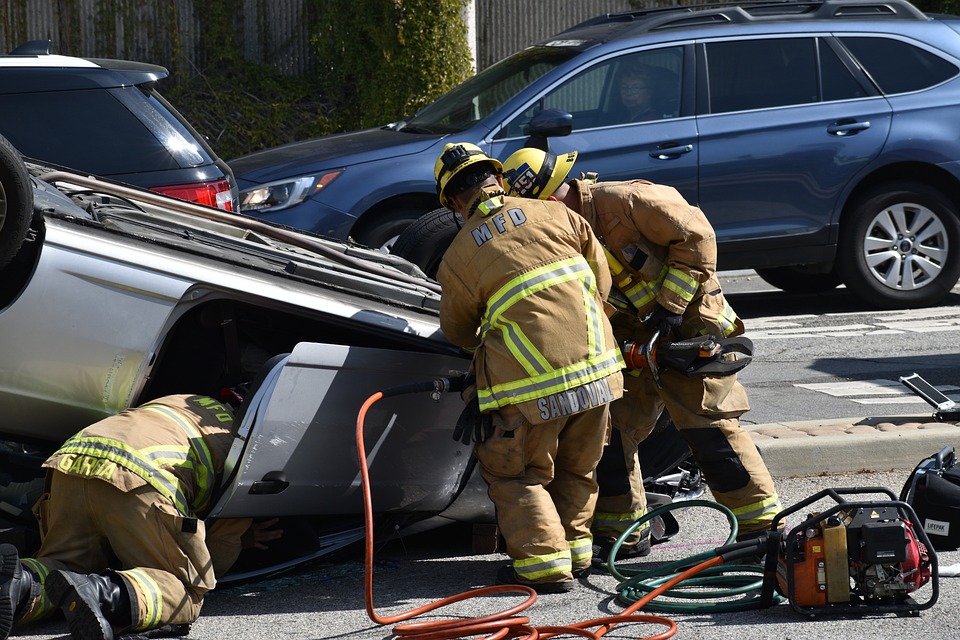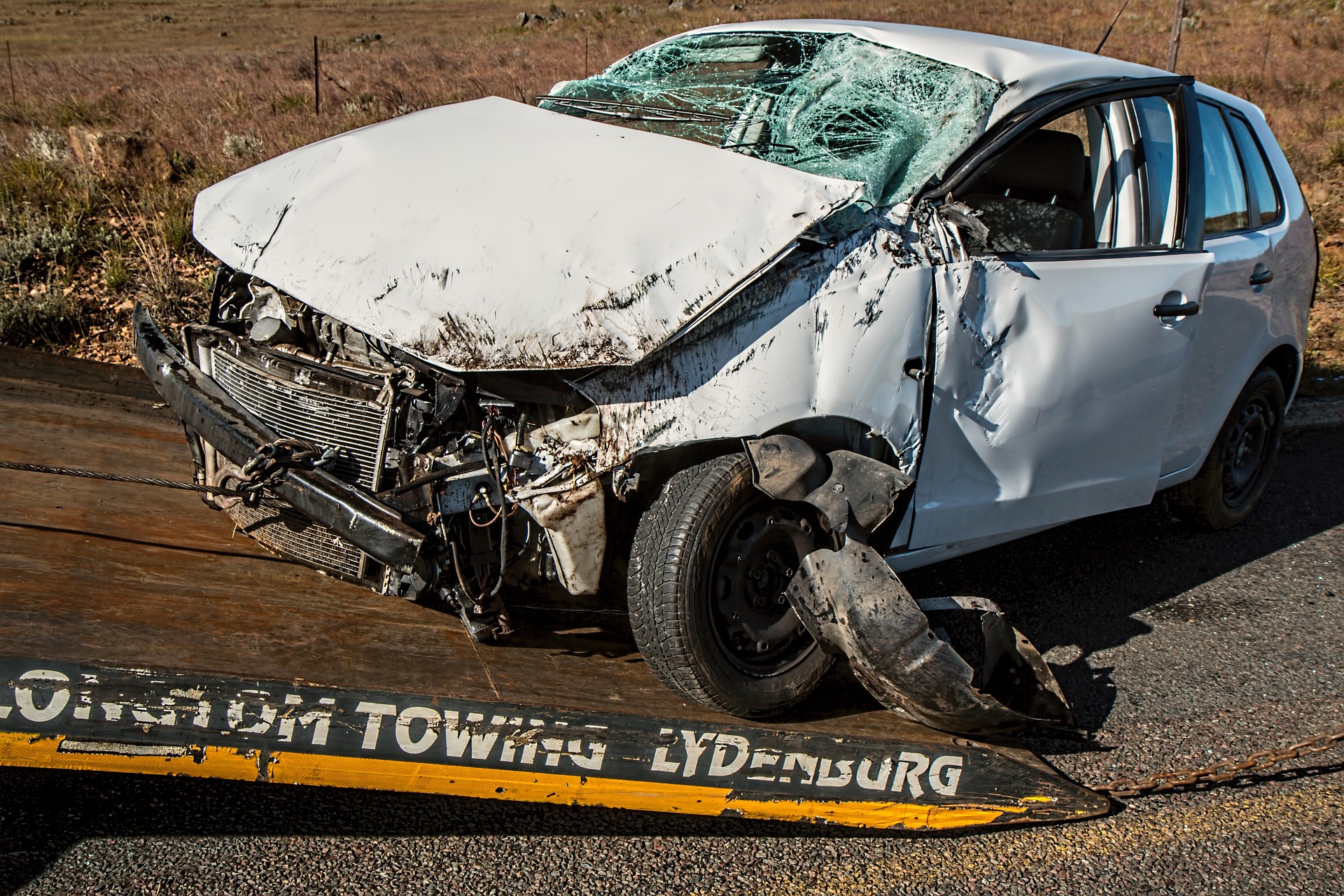Car accidents are stressful and scary events that can have serious consequences for your health, finances, and legal rights. If you’ve been involved in a car accident, one of the most important questions you may have is: who is at fault?
Fault is a legal term that refers to who caused or contributed to an accident by acting negligently or carelessly. Fault determines who is responsible for paying for the damages and injuries resulting from the accident.
But how do you determine who is at fault in a car accident? And why does it matter? In this article, we will answer these questions and more, by covering the following topics:
- How fault is determined in car accidents
- The difference between fault and no-fault states
- The types of evidence that can prove fault
- The common scenarios that indicate fault
- The exceptions and complications that can affect fault
- The consequences of being at fault in a car accident
- The steps you should take after a car accident to protect your rights
By the end of this article, you will have a comprehensive understanding of fault in car accidents and how it affects your insurance claim or legal case. You will also learn some tips and tricks to avoid being at fault in future accidents.
What Is Fault in Car Accidents?
Fault in car accidents is a legal term that refers to the degree of responsibility that each driver has for causing or contributing to the collision. Fault is based on the concept of negligence, which means failing to act with reasonable care on the road.
A driver is at fault for an accident if:
- The driver failed to fulfill his or her basic obligation to behave with a reasonable degree of care on the road. If the driver behaved less safely than the average reasonable person would have, that driver is said to be “negligent”.
- The driver’s negligence was the direct cause of the motor vehicle accident.
For example, if a driver runs a red light and hits another car that has the right of way, that driver is at fault for the accident because they violated a traffic law and caused the collision.
However, fault is not always clear-cut or easy to prove. Sometimes, both drivers may share some degree of fault for an accident. For example, if one driver makes an illegal left turn and hits another driver who was speeding, both drivers may be partially at fault for the accident.
Why Does Fault Matter?
Fault matters because it determines who is liable for paying for the damages resulting from an accident. In most states, the driver who is at fault for an accident is responsible for compensating the other driver and any passengers or pedestrians who were injured or suffered losses because of the accident.
These damages may include:
- Medical expenses
- Lost wages
- Pain and suffering
- Property damage
- Other out-of-pocket costs
The amount of compensation that a driver or a victim can recover depends on several factors, such as:
- The severity and extent of the injuries and damages
- The degree of fault of each driver
- The insurance coverage of each driver
- The state laws governing car accidents
How Fault Is Determined in Car Accidents
The fault is determined by applying the legal principles of negligence to the facts of the accident. Negligence is a failure to exercise reasonable care under the circumstances. A driver is negligent if they do something that a reasonable person would not do, or fails to do something that a reasonable person would do, in the same situation.
For example, a driver who runs a red light, speeds, texts while driving, or drives under the influence of alcohol or drugs is negligent because they are violating the basic duty of care that every driver owes to other road users.
To prove that a driver was negligent and at fault for an accident, you must show four elements:
- Duty: The driver had a legal obligation to act with reasonable care.
- Breach: The driver breached that duty by acting carelessly or recklessly.
- Causation: The driver’s breach caused or contributed to the accident.
- Damages: The accident resulted in injuries or losses that can be compensated.
If you can prove these four elements, you can establish that the driver was at fault for the accident.
However, proving fault is not always straightforward or simple. There may be more than one driver who was negligent or partially responsible for the accident. There may also be other factors that influenced the accident, such as weather conditions, road defects, vehicle malfunctions, or third-party actions.
In some cases, fault may be disputed by the drivers involved or their insurance companies. They may have different versions of what happened or different interpretations of the evidence.
That’s why it’s important to have as much evidence as possible to support your claim of fault.
Evidence can include:
- Police reports
- Photos and videos of the accident scene
- Witness statements
- Medical records
- Vehicle damage estimates
- Expert opinions
The more evidence you have, the stronger your case will be.
The Difference Between Fault and No-Fault States
Another factor that affects how fault is determined and why it matters is the state where the accident occurred. Different states have different laws and systems for handling car accident claims.
There are two main types of systems: fault and no-fault.
In a fault system, the driver who caused the accident is liable for paying for the damages and injuries of the other parties involved. The injured parties can file a claim with their own insurance company, the at-fault driver’s insurance company, or a lawsuit against the at-fault driver.
In a no-fault system, each driver’s own insurance company pays for their medical expenses and lost wages, regardless of who caused the accident. The injured parties cannot sue the at-fault driver unless their injuries meet a certain threshold of severity or cost.
The purpose of a no-fault system is to reduce the number of lawsuits and speed up the payment of claims. However, it also limits the compensation that injured parties can receive and the accountability that at-fault drivers face.
Currently, there are 12 states that have a no-fault system: Florida, Hawaii, Kansas, Kentucky, Massachusetts, Michigan, Minnesota, New Jersey, New York, North Dakota, Pennsylvania, and Utah. The rest of the states have a fault system.
It’s important to know which system applies in your state because it affects your options and rights after a car accident. For example, if you live in a no-fault state, you may need to purchase additional coverage to protect yourself from serious injuries or property damage. You may also need to meet certain criteria to sue the at-fault driver for pain and suffering or other non-economic damages.
The Types of Evidence That Can Prove Fault
As we mentioned earlier, evidence is crucial for proving fault in a car accident. But what types of evidence are most useful and persuasive?
Here are some of the most common and important types of evidence that can help you prove fault:
-
Police report:
A police report is an official document that records the details of the accident, such as the date, time, location, weather conditions, road conditions, vehicles involved, drivers involved, witnesses present, injuries reported, citations issued, and any other relevant information. A police report can provide an impartial and authoritative account of what happened and who was at fault. However, a police report is not always conclusive or accurate. It may contain errors or omissions that can be challenged by other evidence.
-
Photos and videos:
Photos and videos can capture the visual evidence of the accident scene, such as the position and damage of the vehicles, the skid marks on the road, the traffic signs and signals, the debris and injuries, and any other factors that may have contributed to the accident. Photos and videos can help recreate the sequence of events and show who was at fault. However, photos and videos may not tell the whole story or show all angles of the accident. They may also be subject to interpretation or manipulation.
-
Witness statements:
Witnesses are people who saw or heard the accident happen. They can provide their testimony or statement about what they observed and heard. Witnesses can help corroborate or contradict the claims of the drivers involved or provide new information that may not be available from other sources. However, witnesses may not always be reliable or credible. They may have biases or ulterior motives that affect their testimony. They may also have faulty memories or perceptions that distort their recollection of the accident.
-
Medical records:
Medical records are documents that show the diagnosis and treatment of your injuries after the accident. They can include hospital bills, doctor’s notes, prescriptions, test results, x-rays, MRIs, and any other medical evidence that proves your injuries and their severity. Medical records can help link your injuries to the accident and show how they affect your life and well-being. However, medical records may not always be sufficient or consistent. They may not reflect the full extent of your injuries or the long-term effects of your injuries. They may also be disputed by the other party or their insurance company, who may argue that your injuries were pre-existing or caused by something else.
-
Vehicle damage estimates:
Vehicle damage estimates are documents that show the cost of repairing or replacing your vehicle after the accident. They can include repair bills, receipts, appraisals, and any other evidence that proves your vehicle’s value and damage. Vehicle damage estimates can help show the impact and force of the collision and who was at fault. However, vehicle damage estimates may not always be accurate or fair. They may vary depending on the source and method of estimation. They may also be challenged by the other party or their insurance company, who may argue that your vehicle was overvalued or underinsured.
-
Expert opinions:
Expert opinions are statements or reports from professionals who have specialized knowledge or experience in a relevant field. They can include accident reconstructionists, engineers, mechanics, doctors, economists, and any other experts who can provide insight or analysis on the accident and its consequences. Expert opinions can help explain the complex or technical aspects of the accident and who was at fault. However, expert opinions may not always be conclusive or persuasive. They may depend on the assumptions and methods used by the experts. They may also be contradicted by other experts who have different opinions or qualifications.
These are some of the most common scenarios that indicate fault in car accidents. However, they are not the only scenarios that exist. Depending on the circumstances of your case, you may encounter other scenarios that indicate fault or that are more complicated and ambiguous.
The key is to analyze the facts and evidence of your case and apply the legal principles of negligence to determine who was at fault. You may also need to consult a lawyer or an expert who can help you with this process.
The Exceptions and Complications That Can Affect Fault
While determining fault in car accidents may seem straightforward in some cases, there are many exceptions and complications that can affect fault and make it more difficult to prove.
Here are some of the most common exceptions and complications that can affect fault in car accidents:
-
Comparative negligence:
Comparative negligence is a legal doctrine that reduces the amount of compensation that an injured party can receive based on their own degree of fault for the accident. For example, if you were 20% at fault for an accident that caused $10,000 in damages, you can only recover $8,000 from the other party who was 80% at fault. Comparative negligence applies in most states, but there are different types of comparative negligence systems that vary in how they calculate and limit compensation.
-
Contributory negligence:
Contributory negligence is a legal doctrine that bars any compensation for an injured party who was partially at fault for the accident. For example, if you were 10% at fault for an accident that caused $10,000 in damages, you cannot recover anything from the other party who was 90% at fault. Contributory negligence applies in a few states, such as Alabama, Maryland, North Carolina, and Virginia. It is a very harsh and unfair doctrine that can prevent you from getting any compensation for your injuries, even if you were only slightly at fault.
-
Joint and several liabilities:
Joint and several liabilities is a legal doctrine that allows an injured party to recover the full amount of compensation from any of the parties who were at fault for the accident. For example, if you were injured in an accident that was caused by two drivers who were 50% at fault each, you can sue either one of them for the full amount of your damages. Joint and several liability applies in some states, but not in others. It can be beneficial for you if one of the at-fault parties is uninsured or underinsured, or if you cannot locate or identify them.
-
Vicarious liability:
Vicarious liability is a legal doctrine that holds a person or an entity responsible for the actions of another person or entity. For example, if you were injured in an accident that was caused by a driver who was working for a company or an organization, you may be able to sue the employer or the organization for your damages. Vicarious liability applies in some situations, such as when the driver was acting within the scope of their employment or authority, or when the driver was using a vehicle owned or leased by the employer or the organization.
-
Multiple parties:
Multiple parties are involved when there are more than two drivers or vehicles involved in an accident. For example, if you were injured in a chain-reaction collision that involved four cars, there may be multiple parties who were at fault for the accident. Multiple parties can complicate the determination of fault and the allocation of liability. They can also increase the number of claims and lawsuits that may arise from the accident.
These are some of the most common exceptions and complications that can affect fault in car accidents. However, they are not the only exceptions and complications that exist. Depending on the circumstances of your case, you may encounter other exceptions and complications that can affect fault or that are more rare and complex.
The key is to be aware of these exceptions and complications and how they may apply to your case. You may also need to consult a lawyer or an expert who can help you navigate these exceptions and complications and protect your rights.
The Consequences of Being At Fault in a Car Accident
Being at fault in a car accident can have serious consequences for your finances, your insurance, and your legal rights.
Here are some of the most common consequences of being at fault in a car accident:
-
Paying for damages and injuries:
If you are at fault for an accident, you are responsible for paying for the damages and injuries that you caused to the other parties involved. This can include medical bills, property damage, lost income, pain and suffering, and any other losses that they suffered as a result of the accident. Depending on the severity of the accident and the extent of the damages and injuries, this can amount to thousands or even millions of dollars.
-
Filing an insurance claim:
If you are at fault for an accident, you will need to file an insurance claim with your own insurance company to cover the damages and injuries that you caused to the other parties involved. Your insurance company will investigate Being at fault in a car accident can have serious consequences for your finances, your health, and your reputation. Depending on the severity of the accident and the state where it occurred, you may face:
-
Higher insurance premiums:
Your insurance company may raise your rates or even cancel your policy if you are found to be at fault for an accident. The amount of increase depends on factors such as your driving record, your coverage level, and the extent of the damages.
-
Lawsuits:
You may be sued by the other driver or their passengers for their injuries and losses if they exceed their PIP coverage or if they meet the serious injury threshold in a no-fault state. You may also be sued by third parties who were affected by the accident, such as property owners or pedestrians.
-
Out-of-pocket expenses:
You may have to pay for some or all of the damages out of your own pocket if they exceed your liability coverage limits or if you don’t have enough insurance. This can include medical bills, lost wages, pain and suffering, property damage, and legal fees.
-
Criminal charges:
You may face criminal charges if you were driving under the influence of alcohol or drugs, fleeing the scene of an accident, driving without a license or insurance, or causing serious injury or death to someone else.
-
License suspension or revocation:
Your driver’s license may be suspended or revoked by the state if you are found to be at fault for an accident that resulted in serious injury or death if you failed to report an accident, if you failed to pay for damages, or if you accumulated too many points on your driving record.
-
Emotional distress:
You may suffer from emotional distress such as guilt, anxiety, depression, or post-traumatic stress disorder after being involved in an accident that you caused. This can affect your mental health, your relationships, and your quality of life. Being at fault in a car accident can have lasting effects on your life. That’s why it’s important to drive safely and responsibly at all times and to have adequate insurance coverage to protect yourself and others in case of an accident.
If you are at fault in a car accident, you should contact a lawyer who can help you understand your rights and obligations, deal with the insurance companies or the other driver, and defend you in court if necessary.
A lawyer can also help you pursue compensation for your own injuries and losses if you were partially at fault for an accident or if you were injured by another driver who was also at fault.
What Steps Should You Take After a Car Accident to Protect Your Rights?
Car accidents can happen anytime, anywhere, and to anyone. Whether you are at fault or not for a car accident, you need to take certain steps after the incident to protect your rights and interests.
Here are some steps you should take after a car accident to protect your rights:
-
Call 911:
You should report the accident to the authorities as soon as possible. This will help you get medical attention if needed and create a police report that can serve as evidence later.
-
Exchange information:
You should exchange information with the other driver involved in the accident, such as their name, address, phone number, license plate number, driver’s license number, and insurance information.
-
Document the scene:
You should take photos and videos of the accident scene, including the vehicles, the damages, the injuries, the road conditions, the traffic signs and signals, and any other relevant details. You should also get the names and contact information of any witnesses who saw or heard what happened.
-
Seek medical attention:
You should seek medical attention as soon as possible after an accident, even if you feel fine or have minor injuries. Some injuries may not show up right away or may worsen over time. Getting medical attention will help you document your injuries and prevent further complications.
-
Notify your insurance company:
You should notify your insurance company of the accident as soon as possible. You should cooperate with them but avoid admitting fault or giving any statements that could harm your claim. You should also avoid signing any documents or accepting any offers without consulting a lawyer first.
-
Consult a lawyer:
You should consult a lawyer who specializes in car accident cases as soon as possible after an accident. A lawyer can help you understand your rights and options, advise you on how to deal with the insurance companies or the other driver, gather and preserve evidence, file a claim or a lawsuit if necessary, and negotiate or litigate for fair compensation.
By following these steps after a car accident, you can protect your rights and interests and increase your chances of getting the compensation you deserve.
Conclusion
Car accidents can be traumatic and costly events that can affect your life in many ways. If you’ve been in a car accident, you need to know who is at fault and how it affects your compensation.
Fault is determined by different factors depending on the state where the accident occurred and the type of insurance system that applies. Fault matters because it determines who is liable for paying for the damages resulting from an accident.
Proving fault in car accidents can be challenging and complex. It requires collecting and presenting evidence that shows how the accident happened and who was responsible for it.
To protect your rights after a car accident, you need to take certain steps such as calling 911, exchanging information, documenting the scene, seeking medical attention, notifying your insurance company, and consulting a lawyer.
We hope this article has helped you understand who is at fault in a car accident and what you can do to protect your rights. If you have any questions or need legal assistance with your car accident case, please contact us today for a free consultation.
